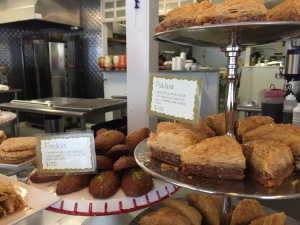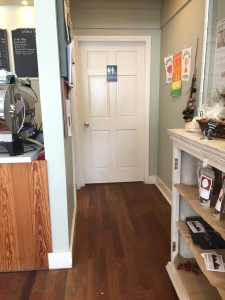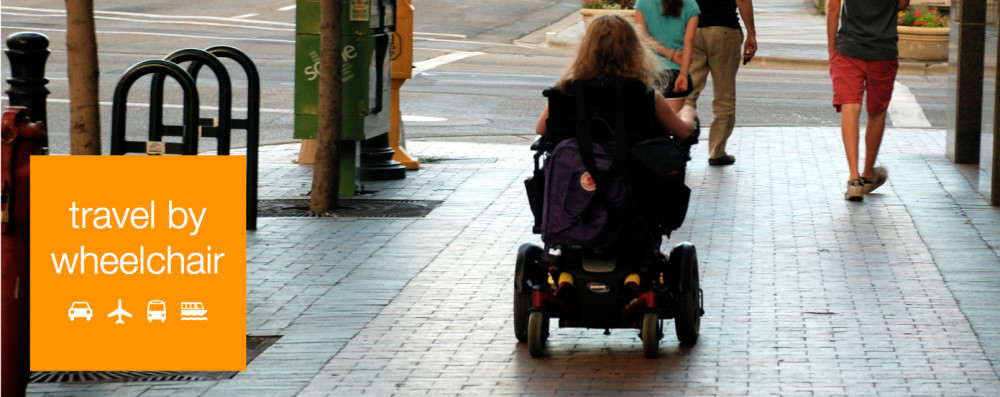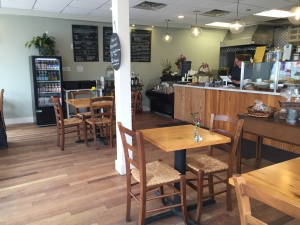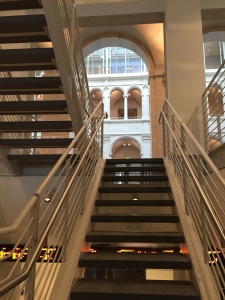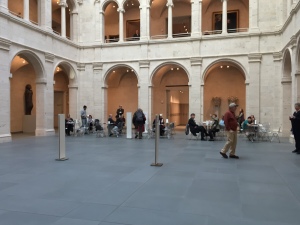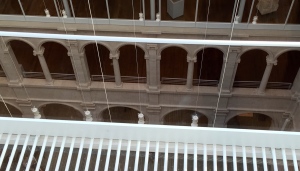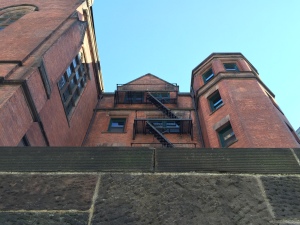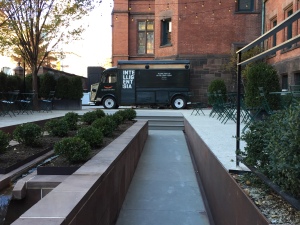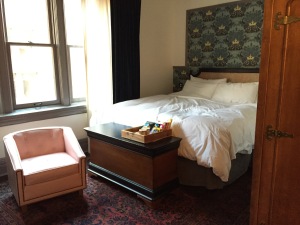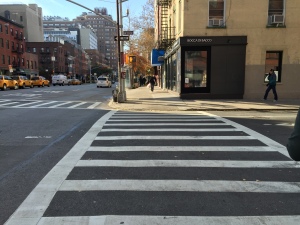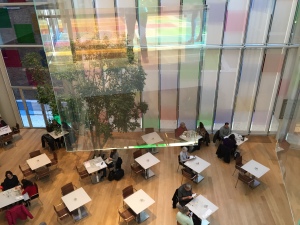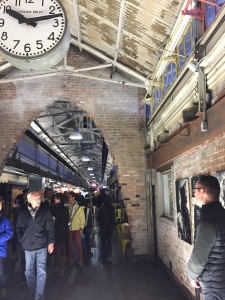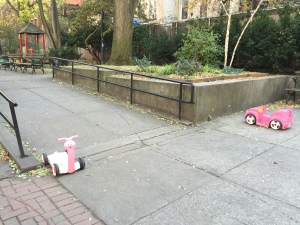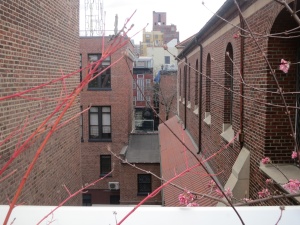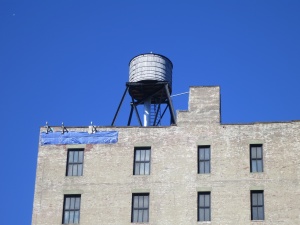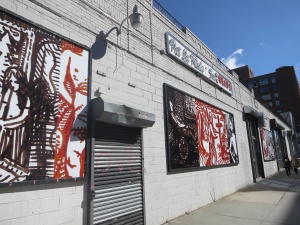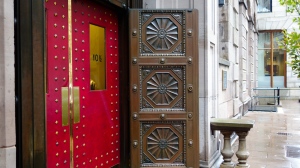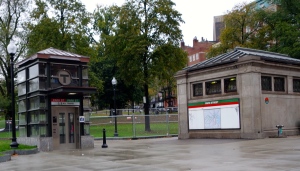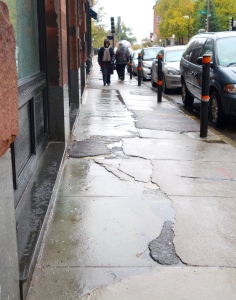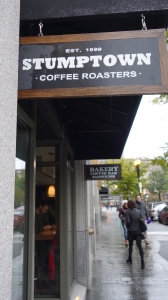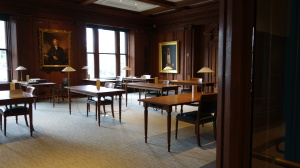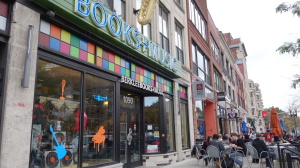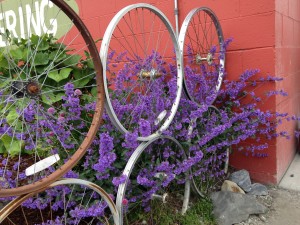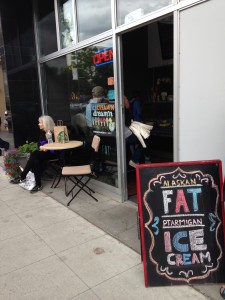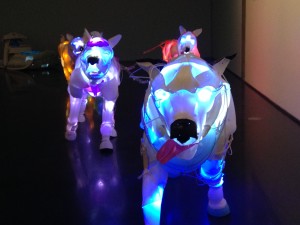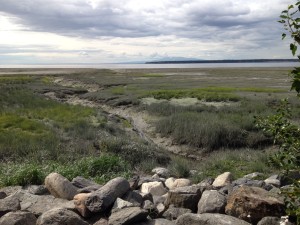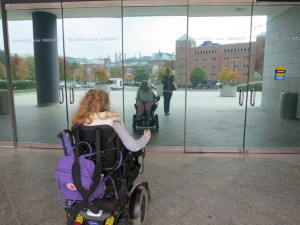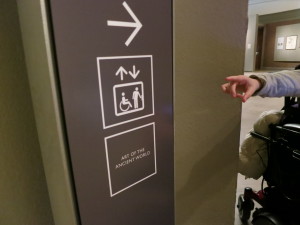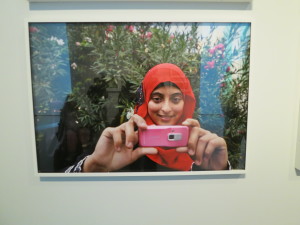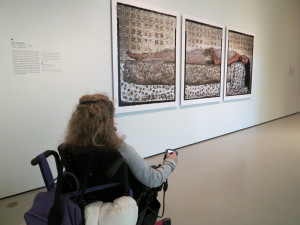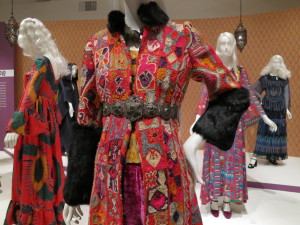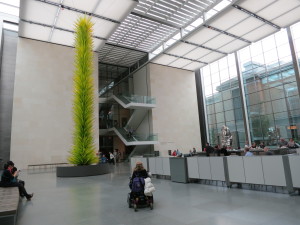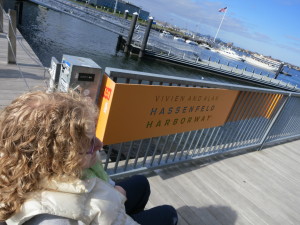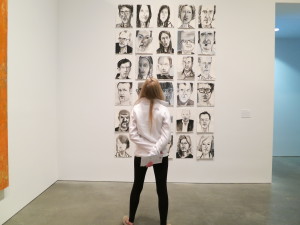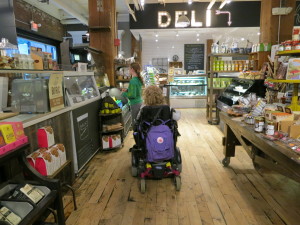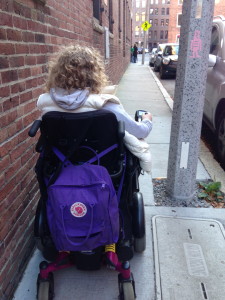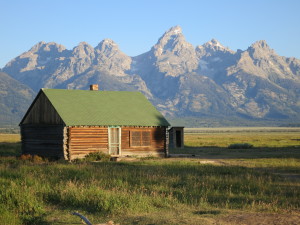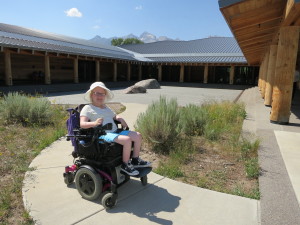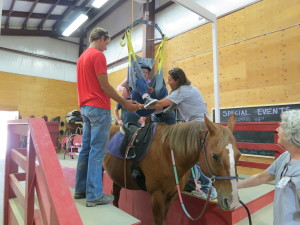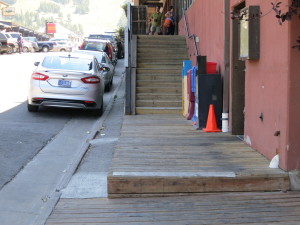My father-in-law, his second wife and their two teenage daughters moved to Boise, ID two years ago. Our daughter Marianne ADORES her grandfather, but since he moved to Boise, he has become increasingly ill and is now no longer able to travel. So, we must go to him.
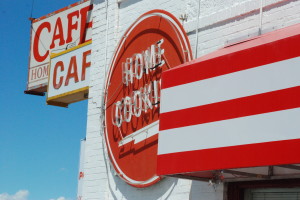
Molly’s Diner, en route to Boise from Salt Lake City
I guess there is no need for wheelchair-accessible rental vans in Boise, because I can’t find one to rent, despite many hours on the internet and the phone. So, we fly into Salt Lake City, rent from www.wheelchairgetaways.com and begin driving. In the desert. For miles on end. With no sign of a rest area in sight. In a heat so intense (because it is summer) that the road shimmers. Or maybe that’s the haze from the raging wildfires in Utah and Idaho….
The good news is that we now have a third driver, our son Pat who just turned 17. So we decided to add a week, detouring to Wyoming and the Grand Teton and Yellowstone National Parks before driving across southern Idaho to spend the second week with our family in the Boise area (see post on Jackson).
I think Boise is pretty hip (not only because of the great number of tattoo parlors one could patronize if one so chose). It’s not too big and has a young, friendly, outdoorsy vibe. Although we’ve only been there twice and in the over-100 degree summertime, I think when it’s NOT summer, the weather can be beautiful. The Boise River runs through the city, and the Boise River Greenbelt (see http://www.visitidaho.org/attraction/parks/boise-river-greenbelt/) has 25 miles of paved pathways connecting 850 acres of parks. Bike shops in town rent bikes, but you can motor in your wheelchair or roller skates too. Last year, some of us floated down the river in tubes (see http://parks.cityofboise.org/parks-locations/floating-the-boise-river/) – a lot of fun on a hot summer day but not very accessible.
Idaho does have its fair share of rodeos, and we went to the Snake River Stampede last year ( http://www.snakeriverstampede.com/rodeo-schedule/ )in Nampa Valley’s Idaho Center. That was accessible and even better, it was indoors and not too long. We went in the afternoon for a family event and there is no alcohol served; it seemed like rather a big deal that there was no alcohol being served which makes me wonder if the evening events rock out and get crazy. Might be good to see what you’re in for before you commit to an evening rodeo.
If you are there in the summer months (June through September) and appreciate good outdoor theater, then do check out the Idaho Shakespeare Festival (www.idahoshakespeare.org/). We’ve seen two great productions there: (Moliere’s The Imaginary Invalid and Stephen Sondheim’s Sweeney Todd). The theater is fully accessible, and you can bring your own picnic for outdoor dining. The setting is really beautiful, and the summer nights are so pleasant once the sun goes down.
I can’t speak personally to this event, but both years we’ve traveled to Boise I’ve hoped to get tickets for the Treasure Valley Rollergirls, an all-female, amateur roller derby: seems like it’d be a fun evening and not something we’ve seen before. Check out their website for for tickets and locations: www.treasurevalleyrollergirls.net/. Please post a comment if you’ve been to a show and recommend it – or don’t recommend it!
Peregrine Fund World Center for Birds of Prey (www.peregrinefund.org/world-center) is located on a quiet hilltop close to the city of Boise. The Center is wheelchair-accessible, full of information, and scenic, set as it is on a quiet prairie-like hill. They do live demonstrations with owls, falcons, eagles and hawks, and the interpretive displays are informative.
This year on our way from Wyoming, we drove across southern Idaho so that we could go to Craters of the Moon National Monument and Preserve (www.nps.gov/crmo/index.htm) and – of course! – the Idaho Potato Museum.

Craters of the Moon, Arco, ID
Craters of the Moon is so weirdly beautiful. It is 18 miles southwest of Arco (and about a 40-minute drive from Blackfoot, where the Idaho Potato Museum lies). There is a seven-mile loop road, starting at the wheelchair-accessible visitor center. You can see a lot from the car, and one of the stops on the loop road has a wheelchair-accessible trail. There is also a campground (on a first-come, first-served basis), and apparently it is cool at night (literally and figuratively). While we were there, meteor showers were expected at night.
Apparently lava fields cover much of southeastern Idaho, but this national monument has a variety of different volcanic features. It lies along the Great Rift, a 60-mile fissure in the earth’s crust, which is stretching apart and creating cracks where the lava can ooze out. It is so worth a trip, although it does feel like it’s in the middle of nowhere.
A feeling compounded by the fact that after leaving the National Park site and driving on to Boise, we drove through miles and miles of barren, barbed-wire-dissected, tracts of land with big signs proclaiming it as the purview of the Idaho National Laboratory. As I read a little more about it and narrated for my family (stuck in the car with me), I realized: hey, I can’t wait to get out of here! There have been 52 nuclear reactors built here, according to Moon Guide Books, and 13 are still in operation. That’s the country’s largest concentration of nuclear reactors and oh, by the way, they are built on top of one of the country’s most geologically active areas AND sits on top of an aquifer that provides drinking and irrigation water for much of southern Idaho. I really hope they are being careful out there….
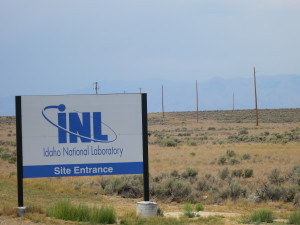
Idaho National Laboratory, ID
If you don’t mind sticking around the site for a while, you can make a stop in at Environmental Breeder Reactor-1 (EBR-1) , which was the world’s first atomic plant. It was decommissioned in 1951 but you can take tours (self-guided or guided). Here’s the website: http://www.inl.gov/ebr/. I couldn’t talk anyone in my family into it: I think the Potato Museum and national park did them in, but I’d go. And you have to get pictures of yourself at Atomic City. As of the census of 2010, there were 29 people living in Atomic City, and there is one store and one bar. Denise Kiernan’s book The Girls of Atomic City about young women working during WWII in (what became) Atomic City on the first atomic bomb is on my to-read list (http://www.denisekiernan.com/Denise_Kiernan.html).

Exhibit from the Idaho Potato Museum, Blackfoot, ID
The Idaho Potato Museum (www.idahopotatomuseum.com/) is small museum located in downtown Blackfoot, in the old Oregon Short LIne Railroad Depot. You’ll get the history of potato farming and the potato industry, nutritional information on the potato, and trivia galore (including the biggest collection of potato mashers AND Mr. and Mrs. Potato Heads that I’ve ever seen). It’s wheelchair accessible, inexpensive, and at least when we were there, staffed by a very kind and courteous woman!
For the past two years we’ve stayed at The Modern Hotel (www.themodernhotel.com) in downtown Boise, in the Linen District.
Restaurants we’ve liked:
- The Matador (http://matadorseattle.com/location/boise/) is a chain of (very good) Tex Mex food. Although we brought our kids and it was early (6 pm), there was already a bar vibe going on. It’s loud and the staff have a little bit of an attitude, but the food is very good and it’s very accessible. Hmmm, I just noticed that the website doesn’t give prices for the dinner menu; that’s annoying. My memory is that it was somewhat on the expensive side for Tex-Mex.
- Fork (http://boisefork.com/eats-drinks/eats/) is near Matador in downtown Boise, and we had a great meal here last year. You can dine well for about $15 an entree (of course, if your taste runs to Prime Rib, you’re looking at $30 per entree), the service was good, the atmosphere alive but not too loud, and it was wheelchair-accessible. I’d return.
- Tony’s PIzzeria Teatro (no website but see Yelp reviews, http://www.yelp.com/biz/tonys-pizzeria-teatro-boise) is a fun, inexpensive Italian restaurant near The Egyptian Theatre in downtown Boise. Although technically wheelchair-accessible, I don’t think you could truly get your chair indoors. We sat outside on the patio and had a great antipasto plate and delicious Neapolitan-style pizzas. I hear the owner is Italian and makes his own sausages; whether he does or not, someone here cares about good food at a good price.
- Cafe Vicino (http://www.cafevicino.com/visit.html) in Boise’s North End serves excellent Italian food in an upscale setting. We had a fantastic meal there last year with our extended family, and they cheerfully accommodated a wheelchair and a slow-walker, and a big group (there were almost 10 of us). The food is expensive but worth it for a splurge.
- Big City Coffee (http://www.bigcitycoffeeld.com) in the Linen District was just down the street from our hotel, The Modern. It was an easy destination with a wheelchair, both in the ease of motoring down the street and access to the restaurant. They have a “big” atmosphere and serve very big portions of hearty foods to nourish body and soul.
- We also liked take-out (or dine-in) at a’Tavola (www.atavolaboise.com/), just across the street from Big City. The portions are a little smaller (which I prefer) and a little simpler but also, I think, somewhat better. We liked getting our breakfasts to go from there (although it’s very accessible both for indoor seating and on the patio outside) as well our picnics (also known as car lunches).
